Imagine you’re on a caravanning holiday, visiting a glorious national park in the outback. You see a magnificent panoramic vista ahead and you pull out your trusty smartphone to take a picture of what you see, only to find your phone’s battery is flat. That would be pretty disappointing. Now imagine you want to use your phone, not to take a photo but to call the emergency services because you’ve come across a fellow traveller who is in need of medical attention. That flat phone battery could cost someone their life.
Our daily existence relies on battery-powered devices, the majority of which are recharged using a USB port. Some we use for fun. Some are a necessary part of our camping gear, and some, whether we like it or not, form the electronic backbone of our existence simply because we rely on them for so much of what we do each day.
Having a system to enable us to keep these devices charged in any situation is more critical than it has ever been.
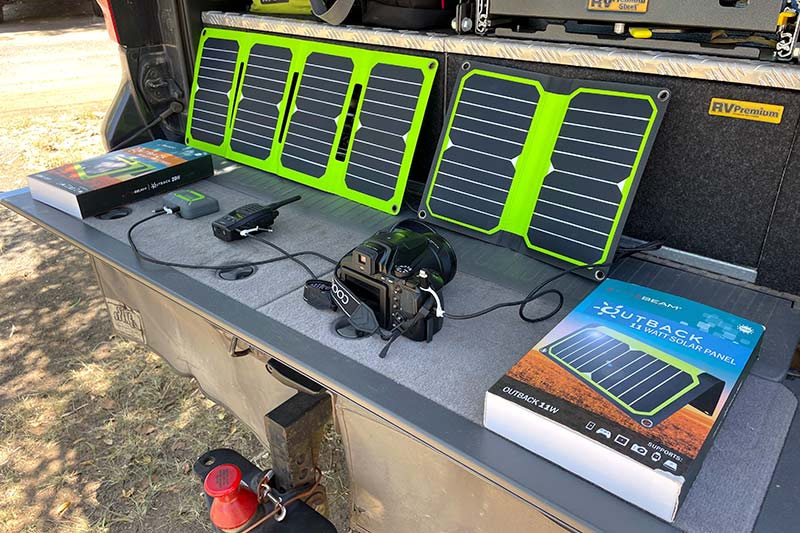
This is where the range of solar USB chargers from BEAM Outback can be a great way to not only ensure you get that magic photo of the national park but to call triple zero should the need arise.
WHAT ARE THE BEAM OUTBACK SOLAR CHARGERS?
A couple of months ago, we featured our initial impressions of these units. To recap, the BEAM Outback solar USB chargers are portable, folding solar panels with either single or dual USB outlets. The idea is that you plug your USB-rechargeable device into the USB output port on the panel in much the same way as you would with a regular USB charger. The difference is you put the panel into the sun and recharge your device using free, green energy virtually anywhere you go.
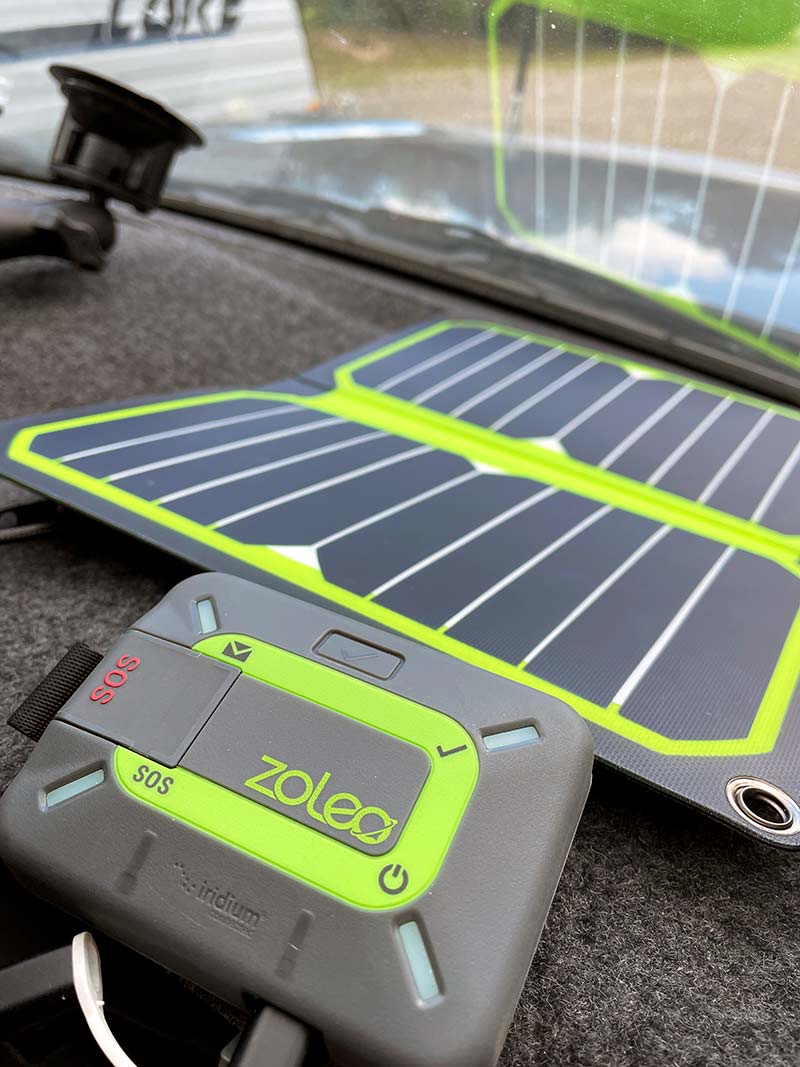
There are three models in the BEAM Outback solar panel range, with outputs from 6W up to an impressive 20W. They are small and lightweight, making them easy to store in a backpack, a drawer in your caravan or the glovebox of your car.
THE TEST
I was supplied one of each of the BEAM Outback solar panels and was told to give them a good test in real-world conditions. This involved using them to recharge various devices to see how quickly they could recharge those devices. This turned out to be more challenging than it first seemed. You see, it is extremely difficult to get consistent empirical tests with solar panels due to the variable nature of the weather. It is quite rare, verging on impossible, to get consistent sun conditions over several hours, day after day.
While we did manage to test the times to recharge a few popular devices, in reality this data is largely academic. It’s one thing to be able to recharge your mobile phone using a solar panel, but is it a practical way to do it?
So I ended up using a BEAM Outback solar panel each time I had the need to recharge a device as a practical alternative to using a regular USB port. This way I could find out with certainty whether or not these chargers could be useful to the average caravanner. What I found was something of a revelation!
HOW LONG DO THEY TAKE TO RECHARGE A DEVICE?
Let’s tackle this question first. The BEAM Outback solar chargers have the ability to recharge any device at the same time as it would take recharging from a normal USB port. So if it takes three hours to recharge an iPhone 12 from dead flat to fully charged from a 2A USB port, you can get the same result from a USB port on the BEAM Outback panel of the same output. However, if the conditions are even slightly cloudy, or the panel isn’t in the ideal position in the sun, then it will take a bit longer.
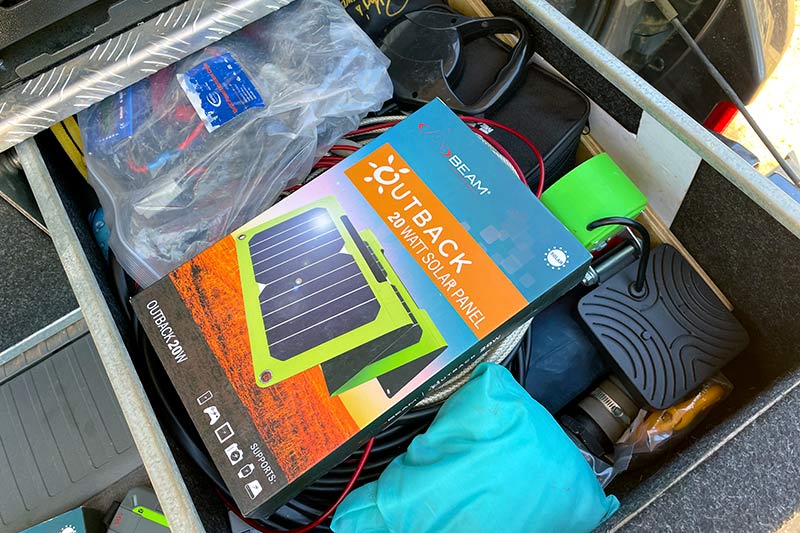
The reality is that it is not very practical to plug your phone (or any other device) into one of these chargers and place them in direct sunlight for three hours. For a start you’ll probably cook your phone or someone will see it sitting in the open and nick off with it.
So under what circumstances are they useful? The best way to answer this question is to describe to you the instances where I did use the BEAM Outback solar chargers to best effect, and it’s here you’ll see just how good they are and how useful they can be in certain everyday situations.
An inconvenient flat battery in my camera
We were in Townsville recently and, as anyone who’s been there will know, it is home to an RAAF base. Be there at the right time and you can see some pretty impressive aircraft up close and personal just by parking yourself under the flight path of the airport.
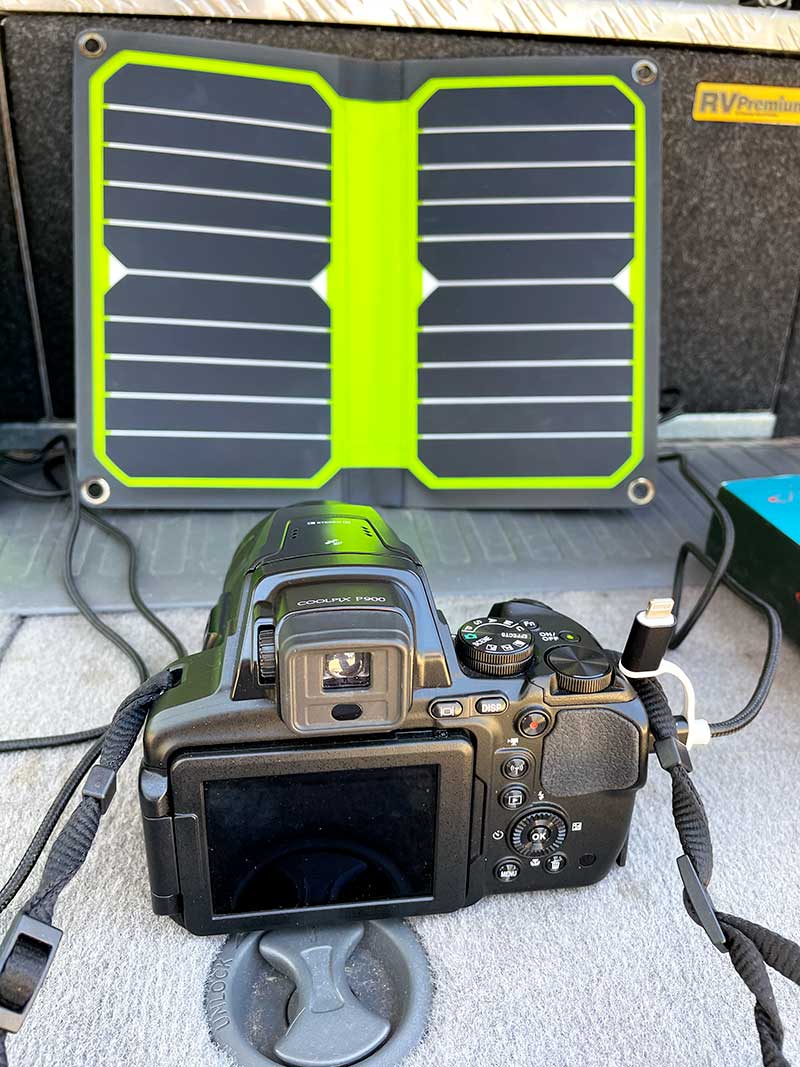
Such was the case when we were there. The air force was training pilots on its latest acquisition, the Lockheed F-35 Lightning Stealth Fighter. I’m an aviation buff so the opportunity to see and possibly photograph these impressive planes in flight was too good to miss. So off I went, found a place to park, got my camera set-up and waited for one of the planes to fly over. To my disappointment, I had forgotten to recharge the camera’s battery.
No problem. I just pulled out the 11W BEAM Outback panel, plugged my camera into it and placed the panel on the roof of the car. In about 20 minutes, I recharged the battery to a sufficient level that enabled me to get the photos I wanted. I thought that was very impressive.
Keeping our bug zapper charged during the course of a camp stay
My wife is very allergic to mozzie bites so we do everything we can to keep them away from her. This includes setting up a UV bug zapper that is powered by an internal USB-charged battery. This normally involves taking the unit inside the van to charge it up and placing it outside and running it all night. By the morning, the battery is flat and I would have to remember to take the light back inside, recharge it and put it out again. It’s a bit of a process and occasionally I forget at least one stage.
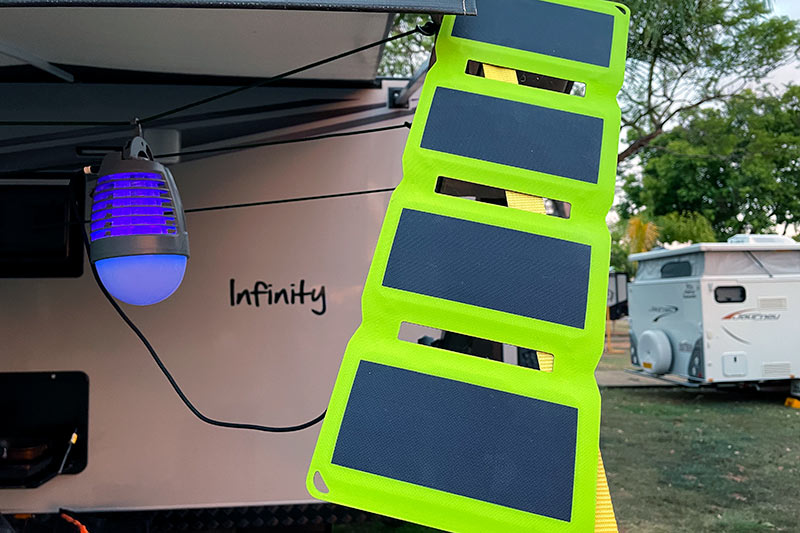
Then the thought occurred to me to set up the bug zapper in its place and connect it to one of the BEAM Outback solar panels and leave them so it would automatically recharge during the day and the bug zapper can continue working the next night without me having to get involved at all. For this, I used the 6W panel and hung it off the awning guy rope using the supplied carabiners.
This worked extremely well. There was no need to be fussy about positioning the panel in the sunlight as just the ambient sunlight was sufficient to recharge the battery during the day on all but the most overcast of days. We would almost always get sufficient charge to power the bug zapper for four or more hours each night while we sat outside before retiring to the van.
Keeping my phone charged while on a bushwalk
Have you ever noticed that your phone’s battery doesn’t last as long when you’re in an area with poor mobile phone coverage? There are very good technical reasons for that, which I won’t bore you with, but suffice to say I’ve had a few occasions where, while bush walking, my phone’s battery has depleted quicker than normal and left me without a phone.
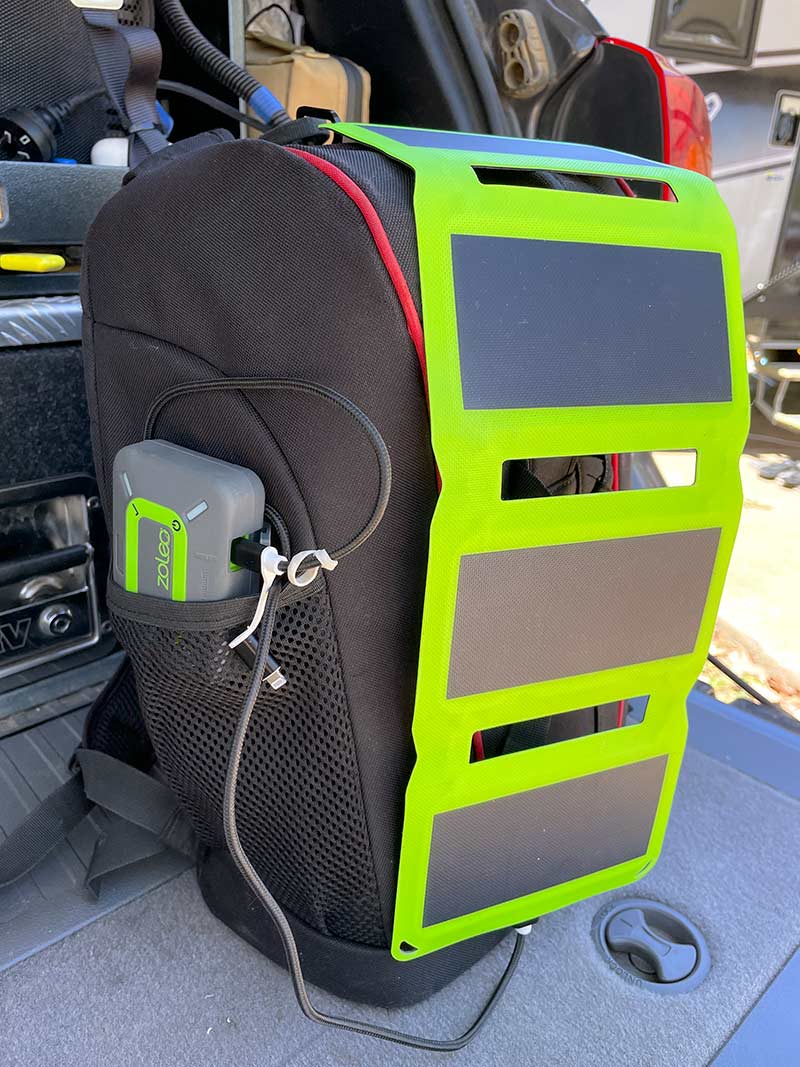
Now I take the 6W BEAM Outback solar panel, clip it to the outside of my backpack and plug it into the phone. Depending on the conditions, the amount of available sunlight and the quality of the phone coverage in the area, I can extend the life of my phone’s battery and even keep it fully charged while it’s in my backpack.
Charging devices stored in the car
We have a number of battery-powered devices in the car that we use on a daily basis. It is essential these are kept fully charged. All the USB ports in the car are being used to power the dash camera, the HEMA Navigator and my wife’s mobile phone, so recharging these items often gets overlooked.
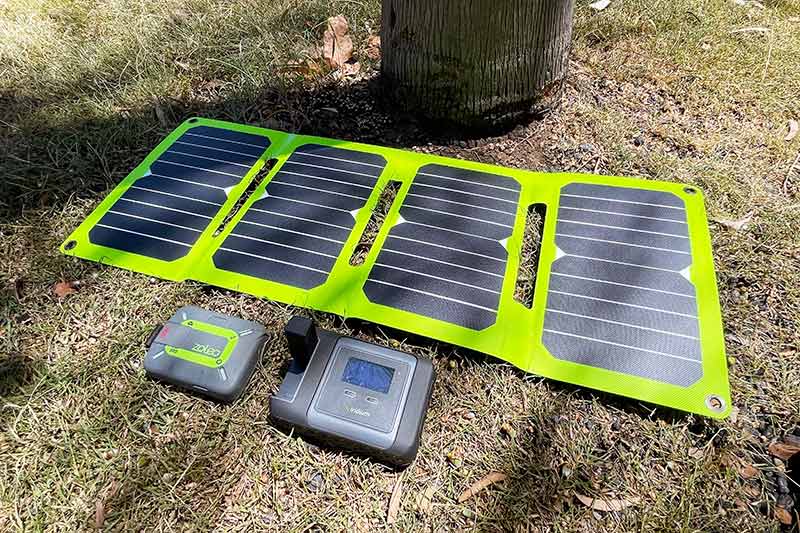
Now I use the 20W BEAM Outback solar charger and its twin USB outlets to charge my ZOLEO Global Satellite Communicator and my Uniden handheld UHF radio when we’ve parked up for the day. The solar panel sits on the dashboard and the equipment is kept on the centre console out of the direct sun.
Now our ZOLEO is always charged up for when we need it and the UHF radio is good to go for when my wife guides me reversing into the next campsite.
Should you buy the BEAM Outback Solar USB Chargers?
If you’re into hiking, bushwalking or 4WDing, you will absolutely find a use for the BEAM Outback solar USB chargers. It didn’t take me long to realise they have a very real purpose and can be used in a variety of situations any traveller may find themselves in.
The sheer proliferation and reliance on battery-powered devices means there will always be times when you need an alternative to a USB charger plugged into a 240V mains outlet, and the BEAM Outback solar USB chargers are just the thing for those times.
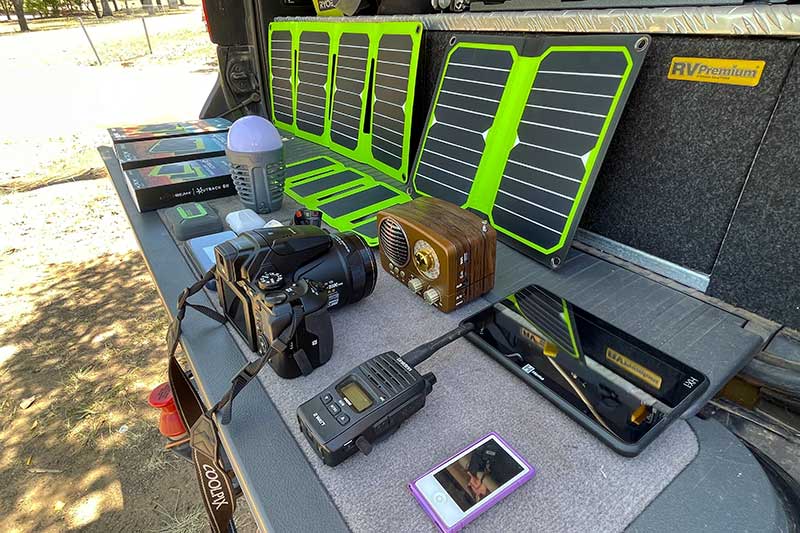
If you have some form of emergency communications device that is USB-recharged, then using one of the BEAM Outback range will ensure it is charged up and ready to go when you need it the most.
Personally, I’ve got the most use out of the 6W and the 20W panels. That said, if I only had the 11W panel, I wouldn’t be concerned as it would still meet most of my needs.
Whichever one (or more) you buy, you can be assured they are an excellent product that is well designed for our conditions. They are small and lightweight so they are easy to carry and store. The carabiners and power cords supplied are also top quality and should last the lifetime of the panels.
If you rely on battery-powered devices during your travels, the BEAM Outback solar USB chargers are a great investment.
More information: www.satphoneshop.com





